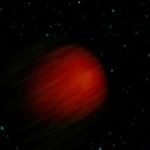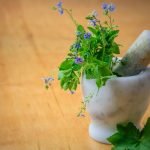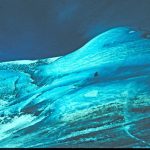Earth & Environment
Hot, humid weather may increase risk of kidney failure
People living in Australia's hot and humid northern regions are more likely to suffer from kidney failure than those living in cooler and less...
This brainless animal folds itself like origami, study finds
How does a living thing fold itself into complex shapes without a brain, nerves, or muscles?
A new study of one of Earth’s simplest animals...
Scientists discover 125,000-year-old elephant tracks in southeastern Spain
For the first time, scientists have uncovered fossilized footprints of large land animals preserved in ancient coastal sand dunes in the Spanish region of...
Not just cold and conflict: Roman troops at Hadrian’s Wall battled parasites
Nearly 2,000 years ago, Roman soldiers stationed on the edge of the empire faced more than cold winds, enemy raids, and homesickness.
New research shows...
Ancient “living rocks” absorb carbon day and night in South Africa
Along the coast of South Africa, strange rocky formations quietly grow in places where life seems unlikely to survive.
These structures, known as microbialites, look...
Why brown bears in central Italy are smaller and calmer than anywhere else
Living close to humans doesn’t just change landscapes—it can also change animals themselves.
A new genetic study shows that brown bears living near villages in...
Scientists turn mussel shell waste into a sustainable abrasive for jeans
A surprising new study suggests that discarded mussel shells—usually thrown away as food waste—could help make the fashion industry more sustainable.
Researchers from the University...
Rain, dust, and ‘badass’ microbes: How life takes hold on new lava
When a volcano erupts, it looks like the ultimate destroyer. Red-hot lava pours across the land, burning everything in its path and leaving behind...
How used coffee grounds can remove toxic metals
Millions of people start their day with a cup of coffee, but few think about what happens to the used coffee grounds afterward.
Most of...
The first alien civilization we encounter will be extremely loud
For decades, science fiction writers have tried their best to prepare us for eventual contact with aliens. Their efforts are dominated by several recurrent...
How cranberries can be a Christmas cracker for health this festive season
From festive sauces to brightly coloured juices, cranberries have long been part of our diets. Beyond their tart flavour and seasonal appeal, these red...
The ‘hobbits’ mysteriously disappeared 50,000 years ago. New study reveals what happened to their...
About 50,000 years ago, humanity lost one of its last surviving hominin cousins, Homo floresiensis (also known as "the hobbit" thanks to its small...
FEATURED
Scientists discover an ancient secret in Washington’s Lakes
Long ago, Earth looked different than it does now.
Volcanoes erupted regularly, meteorites slammed into the surface, and dangerous gases like methane made the air...
Are lethal autonomous weapons the future of warfare
An armed weapons system capable of making decisions sounds like it is straight out of a Terminator movie.
But once lethal autonomous weapons are out...
Giant planets can have very different atmospheres
But out in the galaxy, the atmospheric compositions of giant planets do not fit the solar system trend.
Compound in this herb may help treat pancreatic cancer
In a new study, researchers found a compound derived from the thunder god vine—an herb used in China to treat joint pain, swelling and...
Why some icebergs are green
In a new study, researchers explain why some icebergs have green color instead of the normal blue.
The study was done by a team from...
What Reddit’s basketball fans can tell us about online discourse
Basketball season kicked off last month and with it comes the return of the most enduring of fan traditions: trash talk.
Now, researchers from the...
Student loan forgiveness a ‘meaningful gesture’, but move could drive up inflation
President Joe Biden’s student loan forgiveness announcement was a welcome one for the millions of Americans who struggle with student debt.
However, two Northeastern economists...
1 billion tons of Kīlauea lava spark algae bloom in North Pacific Ocean
Volcanoes are often feared for their destructive power, but a new study reminds us that they can foster new growth.
A year ago in July,...
























